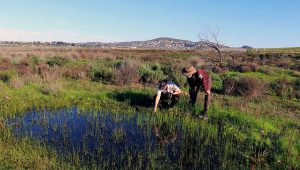Blog posts by Rebecca Rose, Conservation Liaison for Ohio Wildlife Center
Inseparable: Wetlands, Water and Life
Ohio Wildlife Center Celebrates World Wetlands Day
February 2, 2021
Scientists around the world continue to sound the alarm about the growing global water crisis that threatens people and our planet. We now use more water than nature can replenish, and this development is destroying the valuable ecosystem that water and all life depend on most – WETLANDS.
Wetlands hold and provide most of our fresh water, and they naturally filter pollutants, leaving behind water that is safe to drink. The earth has a finite amount of water and our current use is unsustainable.
Each year, Ohio Wildlife Center highlights World Wetlands Day for a very important reason. To successfully rescue, rehabilitate, and return wild animals to their wild homes, they must have homes to return to in their natural habitats. In 2020 the Wildlife Hospital treated 8,103 patients, many that depend on healthy wetland habitats to return to when they recover from illness or injury.
We know that 40 percent of the world’s species live and breed in wetlands, and our precious Ohio wildlife cannot survive and thrive without this critical habitat. Wetlands provide a place for animals – from insects and fish, to birds and mammals – to find food, raise their young, and safely rest during arduous migration journeys.
Because Ohio has lost so many of its original wetlands, it’s critically important to protect and restore what remains. Ohio has swamps, wet prairies, marshes, vernal pools, bogs and fens – and many of these can be visited and enjoyed all year long. Some – like Cedar Bog Nature Preserve in Urbana in Champaign County – are nothing short of magical. As a national natural landmark, Cedar Bog is considered the best example of a boreal and prairie fen complex in Ohio.
For games, power point presentations, and other family activities focused on World Wetlands Day, visit www.worldwetlandsday.org. To read more about Ohio’s Wetland Wonderlands, go to AA wetlands 1 fixed.pdf (state.oh.us).
Thank you for your continued support of our efforts to rescue wildlife and educate our fellow citizens about the importance of protecting and restoring wild Ohio.
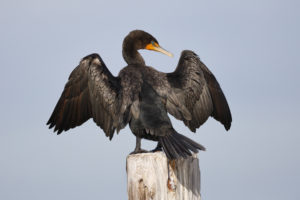
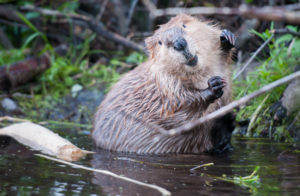
Who Loves Vultures? We do!
Ohio Wildlife Center celebrates International Vulture Awareness Day
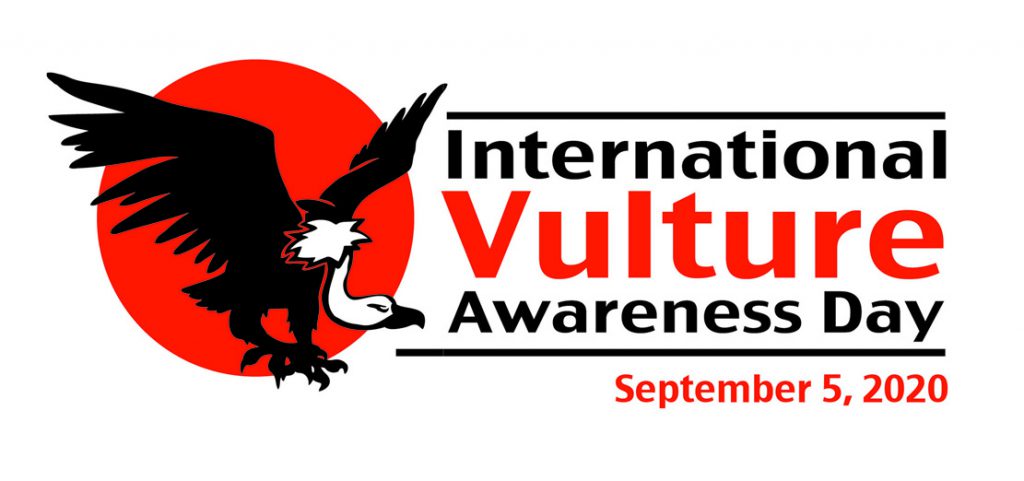
The first Saturday in September is a day to learn and spread facts about a much-maligned group of birds by celebrating International Vulture Awareness Day. More than 160 organizations from 50 countries participate in this celebration. It aims to create awareness about vultures and garner support among the public to address the plight of these birds globally. The organizations involved also highlight the important work done by conservationists to protect vultures and their habitats.
Vultures are a distinctive and spectacular component of the biodiversity of the environments where they live. They provide critically important ecosystem services by cleaning up animals that have died. Vultures are the ultimate recyclers!
Vultures are declining worldwide
Most people would probably not name a vulture as their favorite animal. Even Charles Darwin described vultures as “disgusting.” In fact vultures, like many other species, are often misunderstood and persecuted by people. As a result of direct killing and poisoning, plus habitat loss and changes in farming practices, 16 of the 23 species of vultures worldwide are listed as vulnerable, threatened, endangered or critically endangered. Several species have declined by 90% in some areas of the world.
Very special birds
Vultures are big birds with long lives and an abundance of smarts. At least one species, the Egyptian vulture, uses tools in two ways. They use sharp stones to break open eggs for a meal, and they use twigs to roll up wisps of wool which they arrange to line their nests. This particular talent astonished Victorian naturalists who were the first to record this behavior. In ancient Egypt, the species was sacred and hailed as a symbol of royalty, protected by law. Today, Egyptian vultures are endangered.
What is a vulture and why do they look the way they do?
Vultures are specialized scavengers feeding on the carcasses of dead animals. Their semi-bald heads, large hooked beaks, huge wingspans (for soaring and searching) and some of the best eyesight in the animal kingdom, make them perfectly adapted for their job in nature as the clean-up crew. There are very few examples of vultures taking live prey.
Where do vultures live?
With the exception of Australia and Antarctica, 23 species of vultures are found across the globe and are classified into two groups: Old World Vultures (found in Africa, Asia and Europe) and New World Vultures (found throughout the Americas). It’s important to know that although all species are similar, Old World vultures and New World vultures are not closely related. The similarities in their appearance are an example of convergent evolution.
Vultures in Ohio
We are fortunate to have two species of vultures in Ohio – the Black Vulture and the Turkey Vulture. Both have black feathers, but the Black Vulture has a grayish head and the Turkey Vulture sports a red head. Ohio Wildlife Center rescues, rehabilitates and releases both species each year. We love vultures and are always eager to help others learn to love them too!
Ohio Wildlife Center currently has two vultures as Animal Ambassadors: A Black Vulture named Ranger and a Turkey Vulture named Chase. Both help educate visitors to the Center about the unique roles vultures play in the ecosystem. Read their story at: https://www.ohiowildlifecenter.org/vultures-rule-their-roost/.
Please visit https://www.vultureday.org to discover more about these fascinating birds and find posters, coloring pages and other resources to help you become an advocate for vultures. Stay tuned to Ohio Wildlife Center website for an upcoming virtual program entitled, “How to Love a Vulture.”
In her beautiful essay, Praise Song for the Unloved Animals, author Margaret Renkl writes about vultures in a way all lovers of animals can appreciate:
“Let peals of gratitude ring out for the glossy vulture, soarer of air currents, eater of gore. We gaze in wonder at your distant perfection, mistaking you for creatures we thoughtlessly love much more: for eagles or hawks or ospreys. Stolid in our heavy human bones, we follow you with our eyes, watching as you barely shift the angle of your wings to bank and glide, to circle and circle again.
May we remember in your circling the cycle you complete. On the ground, something is suffering. Something is coming near to the end of its time among us, but its life is not ending. Its life can never end. You are turning its body into something beautiful: blood and feathers and hollow bones. Earthbound no longer, the dead are rising again in you, rising and rising, lifted on air.”
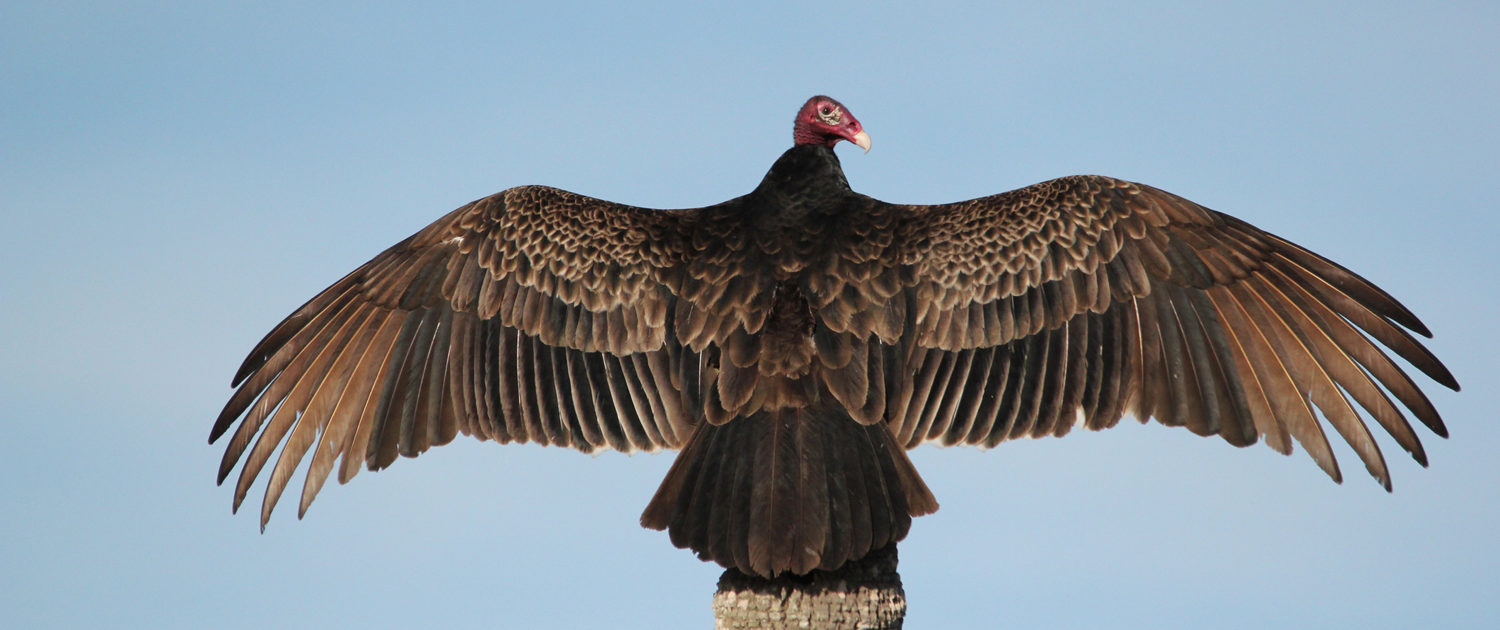
Plastic Free July – We Can Do It!
June 25, 2020
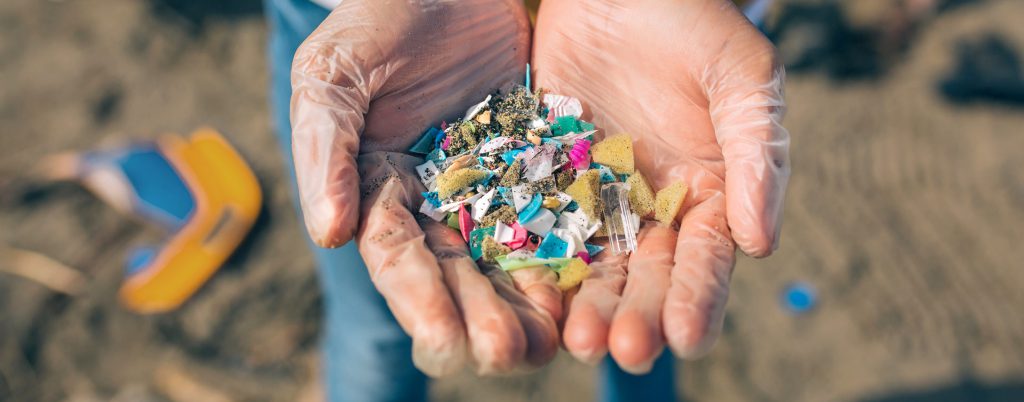
“Think about it. Why would you make something that you’re going to use for a few minutes out of a material that’s basically going to last forever, and you’re just going to throw it away?” Jeb Berrier from the movie Bag It
Whether we’ve experienced it ourselves while walking on a beach, hiking a trail, or just walking or driving down a street in our city, by now, everyone is aware of the massive amount of plastic that is thrown away in our world every second of every day. Images of plastic trash fouling our land and water and killing sea turtles and other wildlife are now iconic. Out of control accumulation of discarded plastic and other trash causes untold misery to some of the world’s poorest and most vulnerable people.
Plastic pollution is so widespread in the environment that a recent study commissioned by WWF International found that because of micro plastics found in our drinking water, we may be ingesting five grams of plastic a week – the equivalent of eating a credit card. We do not yet fully understand how this might impact the health of people.
Although we were told as consumers that we could recycle our way out of the problem of so much plastic, we now know that’s not true. For one thing, only about 8% of plastic is ever recycled – the rest goes into landfills, is incinerated, or ends up in our oceans. Clearly, we need to do more as individuals and demand more from our policy-makers if we want to leave a livable planet for our children and grandchildren. A product that never breaks down will continue to cause harm thousands of years into the future, so we need to do everything in our power to ensure that product never makes it into the environment at all.
A bill recently introduced by U.S. Senator Tom Udall and Congressman Alan Lowenthal – the Break Free from Plastic Pollution Act of 2020 – “is the most comprehensive legislation ever introduced in Congress to tackle the plastic waste crisis. The plastic pollution crisis has reached a tipping point, and the American people are fed up.” You can read more about the Break Free from Plastic Pollution Act here: https://eos.org/articles/bill-calls-for-dramatically-cutting-plastic-pollution
At the same time we support our national leaders in their efforts to tackle this environmental crisis, we need to continue to do our part. July is the month when millions of concerned citizens around the globe turn their focus towards the threats caused by plastic in our environment. Inspired by the Australian organization – Plastic Free Foundation (www.plasticfreejuly.org), the Plastic Free Eco-Challenge provides a wealth of information and practical ideas for all of us to change our habits for the health of people, animals and the environment.
JOIN THE GLOBAL MOVEMENT TO REFUSE SINGLE-USE PLASTICS
This year, the Columbus Zoo and Aquarium has invited Ohio Wildlife Center to join their Plastic Free Eco-Challenge Team. The Challenge runs from July 1st to July 3st. Sign up today! Participation is free and all are welcome! Registration is now open. https://plasticfree.ecochallenge.org/
Ohio Wildlife Center Celebrates WORLD ENVIRONMENT DAY
June 2, 2020
TIME FOR NATURE
The foods we eat, the air we breathe, the water we drink and the climate that makes our planet habitable all come from nature. These are exceptional times in which nature is sending us a message: TO CARE FOR OURSELVES WE MUST CARE FOR NATURE.
The theme for World Environment Day, June 5, 2020 is biodiversity, call to action to combat the accelerating species loss and degradation of the natural world. One million plant and animal species risk extinction, largely due to human activities.
WHAT IS BIODIVERSITY AND WHY DOES IT MATTER?
Look out your window! All of the plants and animals that you can see, plus the multi-millions of tiny living things you typically can’t – make up the stunning biological diversity of our planet that is teeming with life. How many distinct species make up life on Earth? That would seem like a fairly simple question, but the answer may come as a bit of a shock. We simply don’t know.
So why don’t we know the answer to this fundamental question? It’s hard to count life. Many life forms live in inaccessible habitats such as the deep sea, are too small to see, hard to find, or live inside other living things. Instead of counting, researchers have tried to estimate the total number of species by looking for patterns in biodiversity. Using this technique, in 2011, scientists landed on a figure of 8.7 million species.
Another problem with counting species is that biologists do not agree on what the term “species” actually means. Currently, there are at least 50 different definitions of a species to choose from. It’s complicated, but that’s science! It’s both a body of knowledge and a process.
Biodiversity is the variability of living things that makes up life on Earth. It encompasses plants, animals, fungi and bacteria – the ecosystems that house them, and the genetic diversity found among them. Healthy ecosystems, rich with biodiversity, are fundamental to human existence. Biodiversity matters because we are part of nature, not separate from nature.
Visit the World Environment Day website to learn how nature-based solutions offer ways to promote human health, tackle climate change and protect our one and only home – planet Earth: https://www.worldenvironmentday.global/
Caring for Ohio’s diverse wildlife is at the core of what makes the staff and volunteers of Ohio Wildlife Center work every day to rescue, rehabilitate and release animals with the goal to give them a second chance at life. But animals need habitat to survive and thrive. In his Columbus Dispatch column of May 3, 2020, Ohio naturalist Jim McCormac points out that Ohio ranks 43 out of 50 states when it comes to state and federal land ownership, which includes wildlife areas, state parks, natural areas, state and national forests and federal wildlife refuges. Only 2.59 percent of Ohio is taken up by these lands. McCormac noted in his column that “increased protected land equates to increased biodiversity and healthier ecosystems.” We can do better to respect animals and respect the environment.

The white-tailed deer, Ohio’s state mammal, is one of the most abundant and widely distributed mammals on earth. They predate the Ice Ages and are the oldest living deer species. During the Ice Ages, 15 predators larger than a coyote (including saber-toothed cats and the American cheetah) hunted white-tailed deer, but they learned to survive them all.
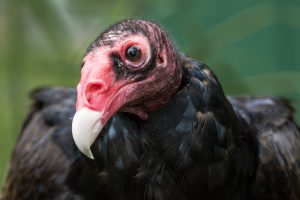
The striking and resourceful turkey vulture is one of approximately 435 species that make up Ohio’s bird diversity. They play an important role in nature as nearly their entire diet is made up of dead animals. While most birds are believed to have a very poor sense of smell, the turkey vulture is an exception. They use their remarkable sense of smell to locate carcasses – even ones out of sight under the forest canopy.
For more information on vulture ambassadors at Ohio Wildlife Center: https://www.ohiowildlifecenter.org/vultures-rule-their-roost/
OHIO WILDLIFE CENTER CELEBRATES WORLD MIGRATORY BIRD DAY, MAY 9th
BIRDS CONNECT OUR WORLD
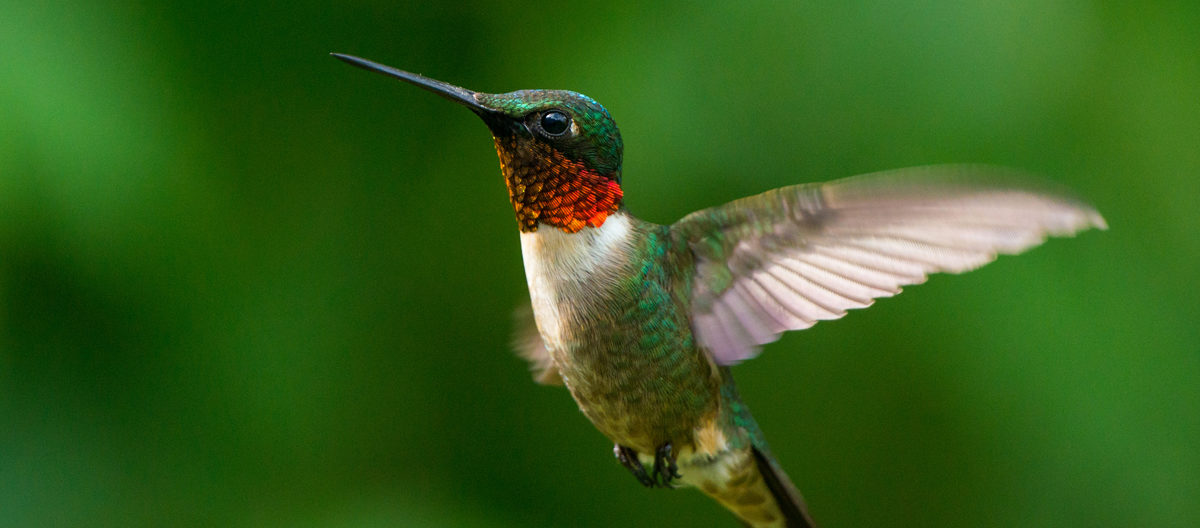
World Migratory Bird Day 2020 celebrates one of nature’s grandest miracles – the epic journeys of several billion birds as they depart their winter homes and fly sometimes thousands of miles to their breeding and nesting habitats – only to reverse the trip a few months later. Bird migration has been going on for millions of years, but when you dig into the details, you can’t help but think these journeys are nothing less than astonishing.
A migratory bird, which may weigh just a few ounces or less, flies thousands of miles, across vast bodies of water (like the Gulf of Mexico), through fierce storms, dodging predators along the way – it’s exhausting just thinking about it! How do birds successfully migrate?
Over time, birds have developed the bodies and brains to make these seemingly impossible long-distance trips. They have light-weight frames and powerful wings, plus a tool-box of navigational cues for both day and night flying. They use the sun, landmarks (mountains, rivers, and coastlines), stars, and Earth’s magnetic field to find their way. Some birds have sensors in their eyes that help them detect the magnetic field, and magnetite in their beaks to help them tell which direction to fly.
Almost half of the known bird species migrate, and in the past 200 years, scientists and bird-watchers have discovered and described the migration paths of thousands of species. Learn more about the science behind these discoveries.
Nearly half of the more than 6,4oo animals treated for injuries at our Wildlife Hospital in 2019 were birds – many were migratory. We can help birds survive by keeping cats indoors – predation by domestic cats is the number-one direct, human-caused threat to birds in the U.S. and Canada. The glass of buildings (including houses) and bright lights causes billions more birds to be injured or killed. Read about Ohio Wildlife Center’s efforts to save migratory birds through the Lights Out Columbus program.
Humans have been fascinated by the migrations of birds for centuries. New scientific discoveries and the use of technology is shedding even more light on the mysteries of migration. At the same time, we know that human activities and climate change are disrupting these ancient flyways, and imperiling the birds that are so important to our own survival. In the words of conservation biologist and “godfather of biodiversity” Thomas Lovejoy, “If you take care of the birds, you take care of most of the big problems in the world.”
Visit the World Migratory Bird Day website for games, factsheets, activities, posters, coloring pages, and to learn more about the history and importance of World Migratory Bird Day.
Ohio Wildlife Center Celebrates World Wetlands Day
Life thrives in wetlands!
Rebecca Rose, Conservation Liaison
Are you looking for an inspiring presentation for your club or organization? Ohio Wildlife Center would like to bring the wonder of wildlife to your gathering. Rebecca is available for community presentations about the Ohio Wildlife Center’s work. Contact rrose@ohiowildlifecenter.org
Citizens in Ohio and around the world celebrate World Wetlands Day each year on February 2nd. This day raises awareness about the vital role of wetlands for people, animals, and our planet. It also marks the date of the adoption of the Convention on Wetlands, which occurred on February 2, 1971. The international convention certifies Ramsar Sites – also known as Wetlands of International Importance. There are currently more than 2,300 Ramsar Sites around the world, with 39 in the U.S., and one in Ohio. You can easily visit a Ramsar Site, because it’s right here in Columbus on West Dodridge Street – Schiermeier Olentangy River Wetland Research Park – open daily from dawn to dusk. Take a walk in a wetland! For more information about Schiermeier, visit this page.
Why Should We Protect and Restore Wetlands in Ohio?
Wetlands are vital for human survival. They are among the world’s most productive environments and wetlands are often called “cradles of biodiversity” because countless species of plants and animals depend on these habitats for their very survival.
Worldwide, 40 percent of all species live or breed in wetlands. In Ohio, 25 percent of the plant species, 50 percent of the fish species, 75 percent of the bird species, and 75 percent of the amphibian species that are listed as threatened or endangered live in or around the state’s wetlands. The wetland habitats in Ohio (marshes, swamps, bogs and fens) provide the principle habitat for virtually all waterfowl species – some 75 percent breed exclusively in wetlands. Ohio has already lost 90 percent of its historic wetlands, and is second only to California (91 percent) in the destruction of these critical habitats. The vast majority of wetlands have been destroyed in the name of agricultural expansion. Other major factors include road building, residential development, and the building of large facilities like shopping malls, factories, airports and ironically, reservoirs.
Wetland preservation and restoration is critical for human health and safety. For example, wetlands are more important than water reservoirs because when water enters a wetland, this environment acts as a purifier – cleaning the water before it flows out by removing, retaining, and transforming nutrients, processing wastes, and trapping sediments. Some wetlands recharge aquifers that provide drinking water, and some function in flood control by storing excess water during storm events.
Many of the animals that are rescued, rehabilitated, and released by Ohio Wildlife Center depend on wetland habitats for their continued survival. Frogs, turtles, bald eagles, osprey, ducks, geese, herons, egrets and many songbirds, plus mammals like mink, beaver and bats, thrive in wetlands.
Celebrate these magical, life-sustaining habitats by educating yourself and sharing information with friends and family. The World Wetlands Day website offers tremendous resources for individuals, organizations and educators. Visit the site here.
***Wetland habitats are so important, at Ohio Wildlife Center we’re celebrating World Wetlands Day for two weeks in February. Follow us on Facebook for additional information about vernal pools and wetlands to visit in Ohio, as well as exciting conservation and restoration projects happening across our state.
The Geese Among Us
We often hear them before we see them, when the raucous honking causes us to stop in our tracks and look up. They cut their classic “V” across the sky, and it’s always a thrill to see them in their wild and ancient flying formations. (This group flying strategy is not as simple as it looks; it involves flying at a specific height and distance from the next closest bird, and a cyclical rotating of the geese at the tips and the front to spread flight fatigue equally among the flock members. The shape also allows them to best see each other. The V is so energy efficient that it is used as the basic flight formation for military aircraft.) Now it’s gosling time in Ohio and as we smile at the newly-hatched yellow fluff balls and the downy, awkward half-grown goslings following closely behind their protective parents, it’s a good time to ask – How much do we really know about this giant, striking bird that now lives among us in a very big way?
Between the end of the Civil War and the early 1900s, Canada geese were nearly wiped out by overhunting and market killing for meat and feathers, egg gathering, and the draining of wetlands. The Ohio Division of Wildlife initiated a Canada goose restoration program with 10 pairs each on three state-owned wetland areas in 1956. The first statewide survey of the reintroduced geese wasn’t conducted until 23 years later, in 1979. By then, the geese were already nesting in 49 of Ohio’s 88 counties and the population was estimated to be 18,000. Now these intelligent, adaptable birds are found in every county and the Ohio Department of Natural Resources reports the population has quadrupled since 1979. Success! Yes…but it’s complicated.
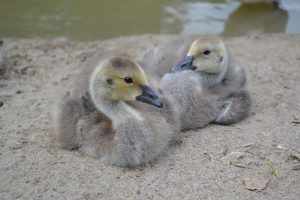
The Canada goose is what urban ecologists call an “exploiter”– a species that not only tolerates humans but thrives alongside us. Geese like what many people like…open expanses of short, pampered grass and neatly manicured ponds. (Think zoos, parks, golf courses, apartment complexes, shopping centers and corporate headquarters.) The grass is delicious and plentiful, and the pretty ponds devoid of any natural (tall) vegetation at the edges are easy to enter and exit and don’t allow any hiding places for potential predators. Enter many smart geese that know a good habitat when they see one. The males fight it out to win a female, and she chooses the location – always near water – to build her nest of dry grasses, sticks and moss, lined with down. She uses her body to make it bowl-shaped before laying 4 to 7 (sometimes 2 to 11) large, white eggs. Mom keeps them warm while dad stands guard nearby. The goslings hatch in less than a month, and they are on a fast-track to success! Right out of the egg their eyes are open, and within 24 hours, they follow their parents out of the nest and can already swim and feed themselves. Within 7 to 9 weeks, they’re feathered and ready to fly. (Fun, Endearing Fact! Adult Canada geese are such devoted parents that they will readily adopt an orphaned gosling from another family and make it their own! Ohio Wildlife Center staff have facilitated many such adoptions by introducing single goslings brought to our Wildlife Hospital to wild families of Canada geese. Watch it happen here.)
We Can Make Peace with Geese
Growing human populations, plus loss of natural habitat, plus an increase in man-made landscapes, plus “exploiter” species that flourish in said man-made landscapes – equals what is often called human-wildlife conflict. But human-wildlife conflict is really conflict between people about wildlife. Some people are annoyed by large numbers of geese and in particular their droppings. Complaints sometimes create a desire to just get rid of geese – by any means possible. Killing large numbers of geese without addressing the root causes of dense congregations is inhumane, unnecessary, and most importantly – it doesn’t work. To lower goose populations, you need a multi-pronged plan. And the good news is – these plans work!
In the landmark book, “Wild Neighbors: The Humane Approach to Living with Wildlife”, author John Hadidian dedicates an entire chapter to Canada geese, and more resources for cities, towns and individual homeowners are becoming available as people express a desire to coexist with urban and suburban wildlife. Animals displaced by development have nowhere to go, and they often don’t go anywhere because they can adapt to the urban environment which often holds the resources they need to survive, like food, shelter, and places to nest and den.
There is still so much to learn about the wildlife that lives in our communities. Another animal that is smart and adaptable is the coyote. Coyotes are not native to Ohio but now live in all 88 counties. Tens of thousands of coyotes are killed each year in the U.S. But a recent NPR article is shedding light on new research and perhaps changing attitudes about how people can best coexist with wild predators.
NPR.ORG Killing Coyotes Not As Effective As Once Thought, Researchers Say
SCRAM! Is On the Job in Central Ohio
SCRAM! (Suburban Commercial and Residential Animal Management) Wildlife Control is a service of the Ohio Wildlife Center that provides non-lethal solutions to human-wildlife conflicts in your home or business. SCRAM! state-certified technicians:
- Humanely evict wild animals
- Permanently exclude wild animals
- Prevent wildlife from moving in
All proceeds from SCRAM! Services support Ohio Wildlife Center’s wildlife rehabilitation and conservation efforts. Wild animals are not pests or intruders, they are members of our communities. When we seek ways to coexist with wildlife, our communities grow stronger.
SCRAM! Helps with Goose Mitigation
Ohio Wildlife Center’s SCRAM! service is a much needed alternative to traditional animal control companies that trap and euthanize animals they find.
SCRAM! offers goose mitigation services to landlords, property managers, municipalities and homeowners associations who desire year-round monitoring and control of goose populations.
Adam Turpen, SCRAM! Director offered these tips to businesses or residential areas that are seeking solutions for management of Canada Geese. Expectations should match the habitat in question. If there is a nice line of site for safety, geese will seek out this area over others with tall grasses or cattails. Habitat modification is the more permanent solution. When planning a public area near a water source, it is critical to consider habitat modification to decrease interest by Canada geese.
If you or your business already has a problem with nesting Canada Geese, a strict no-feeding policy should be enforced. This will increase the health of the flock by removing a consistent and reliable yet poor nutritional value food source. It will also reduce the over-sized carrying capacity — at 1.5 lbs of manure per goose per day, it adds up!
A very critical component is to introduce a predator to the environment — typically a dog. The dog’s pursuit of the geese will encourage them to leave an unsafe environment. Daily visits at different times and intervals keeps the geese on alert. The goal is to discourage nesting so that the geese find offsite more natural areas. Using a radio-controlled boat also simulates a predator for the geese and these boats can access areas the dogs can’t as easily.
Monitoring nesting sites and tracking data from year-to-year shows us how to anticipate nesting areas and potential negative encounters. Expecting no geese in an area that provides everything they need is not realistic. Open water is now available year round and the need to migrate is less and less. Learning to co-exist or modify habitat is a more realistic approach.
Success story at The Columbus Zoo and Aquarium
In 2001, there were 258 resident geese and 52 goslings on zoo grounds. There were 32 nests. Female geese can hatch 13 eggs per year, starting at age 2. A cooperative effort between SCRAM! and the zoo achieved a 91% decrease in the number of goslings hatched on grounds. In 2018 there were 5 goslings on grounds.
If you would like more information for residential or business purposes, contact SCRAM! at 614-763-0696.
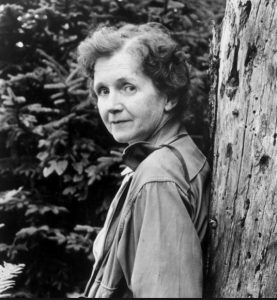 Earth Day: A Look Back
Earth Day: A Look Back
Now celebrated internationally by 193 countries as Mother Earth Day, the first Earth Day took place on April 22, 1970, in the United States.
At the time, mainstream America was largely oblivious to environmental concerns, but the stage had been set for significant change by the publication of Rachel Carson’s bestselling book Silent Spring in 1962.
Rachel Louise Carson was a marine biologist whose writings on nature are credited with igniting the global environmental movement. With the publication of Silent Spring, Carson contended that pesticides had detrimental effects on the environment, and that these chemicals not only killed insects but also made their way up the food chain to threaten bird and fish populations.
After CBS TV aired its special report “The Silent Spring of Rachel Carson”, on April 3, 1963, pesticide usage became a major issue and the consciousness of our nation was transformed. The enormous public response resulted in a congressional review of pesticide dangers and the release of a report by President Kennedy’s Scientific Advisory Committee validating Carson’s scientific claims. Rachel Carson’s writings are credited with inspiring the first Earth Day nearly five decades ago.
This wasn’t the first time citizens of our country took to the streets to protest gross injustice against nature. To discover the very beginnings of environmental activism in the U.S., we have to travel back more than 100 years. Read more here: The Women Who Saved Birds
Where Did Environmental Activism Begin?
The Women Who Saved Birds –The Story of the Migratory Bird Treaty Act
By: Rebecca Rose, Conservation Liaison
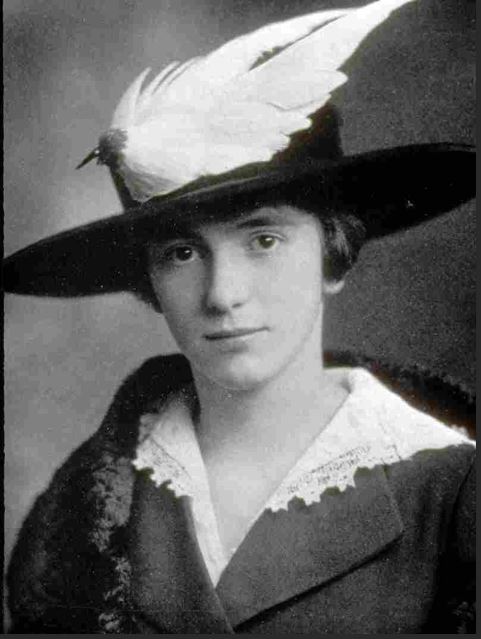
To discover the very beginnings of environmental activism in the U.S., we have to travel back more than 100 years to meet The Women Who Saved Birds.
If the story of these early protesters tells us anything, it is that if you set out to advocate for animals, dig in and be ready for the long fight. This is more important now than ever in human history, as climate change (and the severe loss of global biodiversity) threatens life on our planet.
It was the late 1800s, and the battle over feathers was raging in America. News of the staggering number of birds being slaughtered simply to adorn fashionable hats was spreading across our country, often documented in magazines like Good Housekeeping. This was a true “fashion frenzy” – and fancy hats with the plumage of snowy egrets, white ibises and great blue herons were everywhere. Some designers even used stuffed owl heads, seabird wings, and whole hummingbirds to take this fashion fad to an absurd level.
Women Speak Out
In the 1886-1887 winter issue of Good Housekeeping, it was reported that, “at Cape Cod, 40,000 terns have been killed in one season by a single agent of the hat trade.” Another hunter killed 40,000 seabirds, at 40 cents apiece, to supply just one hat-maker. The situation was grim to say the least. A journalist writing for the Norfolk Virginian in 1897 doubted the killing could be stopped and wrote that, “Humanitarians and reformers may labor to save the birds, but these labor in vain and will so long as fashion says to womankind wear wings, and mirrors tell the fact, fatal to birds, that feathers are becoming.” That journalist was betting against the collective voices of women speaking out to protect birds, and it turned out to be a bad bet.
While some women were embracing feather hats, others were coming together in defense of millions of defenseless birds. These women organized what were the first protest movements focused on the protection of wildlife to take place in the United States.
Wealthy women in Boston hosted tea parties to inform their friends about the wasteful and inhumane killing of birds for the fashion industry. They successfully recruited over 900 women to their cause, and soon after, Bostonians Harriet Lawrence Hemenway and Minna B. Hall, formed the Massachusetts Audubon Society. As the outrage against killing birds ignited activism, other states organized and these clubs eventually led to the formation of the National Audubon Society. Along the way the women gained allies within influential newspapers like the Chicago Daily Tribune and the Indianapolis News.
Artists Lend Their Voices
Artists proved to be particularly potent voices in the fight to save birds from unsustainable slaughter. George Frederic Watts, an English Victorian painter and sculptor (who said, “I paint ideas, not things”), created a painting called A Dedication, with the subtitle, “To those who love the beautiful and mourn over the senseless and cruel destruction of bird life and beauty.” His painting depicts an angel mourning over a table strewn with colorful feathers and the bodies of dead birds. The painting was widely reproduced and distributed and used by the newly formed bird protection groups to promote their cause of ending the feather trade.

Although the women had support in some corners, there was pushback in the media and of course from individuals and industries that were benefiting financially from the continued killing of birds. Outright lies about the methods of gathering feathers for hats were spread – including the falsehood that no birds were harmed but rather the feathers were naturally molted and simply gathered from underneath the birds’ nests. For this to be true, feathers would have had to fall continuously as a heavy snowfall. (I remember well in the 1980s when citizens around the world were fighting the ivory trade – one of the falsehoods perpetuated was that elephants “dropped” their tusks like antlers and the ivory was harmlessly collected. Some playbooks never change!)
Forcing change in the global fashion industry to protect birds was an uphill, decades-long battle for the women and their allies who were appalled by the wanton destruction of nature. In essence, the general public just did not care much about the inhumane treatment of animals – domestic or wild. Although the movement to protect birds was growing, they were hindered by the lack of concrete evidence of the scope of the trade, the cruelty of methods, and the extent to which particular species were under threat. But the activists in the U.S. (and in England and Australia as well as the killing of birds for feathers in fashion had gone global) got a huge boost with the timely images of the conservationist and photographer Arthur Mattingley.
Plundered for Their Plumes
Back in 1906, Mattingley spent ten days camping in Mathoura – a settlement on the Murray River in New South Wales, Australia. The wetlands there support large populations of ibis, herons, spoonbills and egrets. Enchanted by the egrets nesting in the St. Helena swamp, he decided to go back a month later to photograph the parents feeding their newly-hatched chicks.
What he saw instead was a sickening sight. “We could see some large patches of white, either floating in the air or reclining on the fallen trees in the vicinity of the egrets’ rookery…There, strewn on the floating water-weed, and also on the adjacent logs, were at least 50 carcasses of large white and smaller plumed egrets – nearly one third of the rookery, perhaps more – the birds having been shot off their nests containing young. What a holocaust! Plundered for their plumes. What a monument of human callousness! There were 50 birds ruthlessly destroyed, besides their young (about 200) left to die of starvation!” Feather trade hunters had gone through and killed or maimed the adults to take their plumes.
He photographed the entire sickening scene, and now he was on a mission! He rallied Australian ornithologists, published an article in the journal The Emu, and with a delegation of scientists, went straight to the Australian Prime Minister. He gave enlarged copies of his photos to the Royal Society for the Protection of Birds in London, where they were displayed in towns, schools, museums, shop windows and local newspapers. The images made their way to Paris, Amsterdam, and on to America and the Audubon Societies.
Migratory Bird Treaty Act of 1918
Meanwhile, back at the White House, Teddy Roosevelt signed an executive order protecting Pelican Island in Florida as a federal bird reservation – the first of many. Women and men were speaking out, continuing with their intensive campaigns of pressure on the millinery industry and on women who continued to wear the offensive feather hats.
Finally, after decades of hard-fought battles on behalf of the birds of the world, the Migratory Bird Treaty Act of 1918 was enacted. Now it was unlawful to “pursue, hunt, take, capture, kill, possess, sell, purchase, barter, import, export, or transport any migratory bird.” This effectively destroyed one baffling and devastating fashion trend.
This law lives on today, providing important protection to birds and helping to preserve biodiversity.
This year, Ohio Wildlife Center celebrates 35 years – rescuing, rehabilitating, releasing, educating and advocating – all toward the goal of changing the hearts and minds of people so that other species can survive and thrive. We owe it to our children, for as Pulitzer-Prize winning scientist and author E.O. Wilson has told us, “The loss of species is the folly our ancestors are least likely to forgive us”.
Learn more here about what you can do to protect our native species here in Ohio.
Rebecca Rose (Conservation Liaison, Development) recently joined the development department as the conservation liaison. She comes to Ohio Wildlife Center after working at the Columbus Zoo and Aquarium as an environmental education specialist and, most recently, as the Zoo’s field conservation manager. She currently serves on the board of directors for the Pan African Sanctuary Alliance, Friends of Bonobos, and the Center for Conservation Peacebuilding. In her new role at the Wildlife Center she will be building awareness of the Center’s work in conservation in the community through presentations and outreach.
Sources:
“Feather Wars’ tells tale of early plunder of birds in the Everglades”, by Jan Sjostrom, Palm Beach Daily News, April 2012
The American Historian. “The History of Animal Protection in the United States”, by Janet M. Davis, 2015
Journal of Art in Society. “Fashion, Feathers and Animal Rights”, the Mattingley Photographs and the Fight for the Protection of Birds, by Philip McCouat, 2016
U.S. Fish and Wildlife Service. “Lessons of the Feather Trade can Help Service Combat Wildlife Trafficking”, August, 2016
